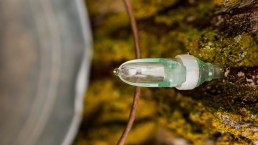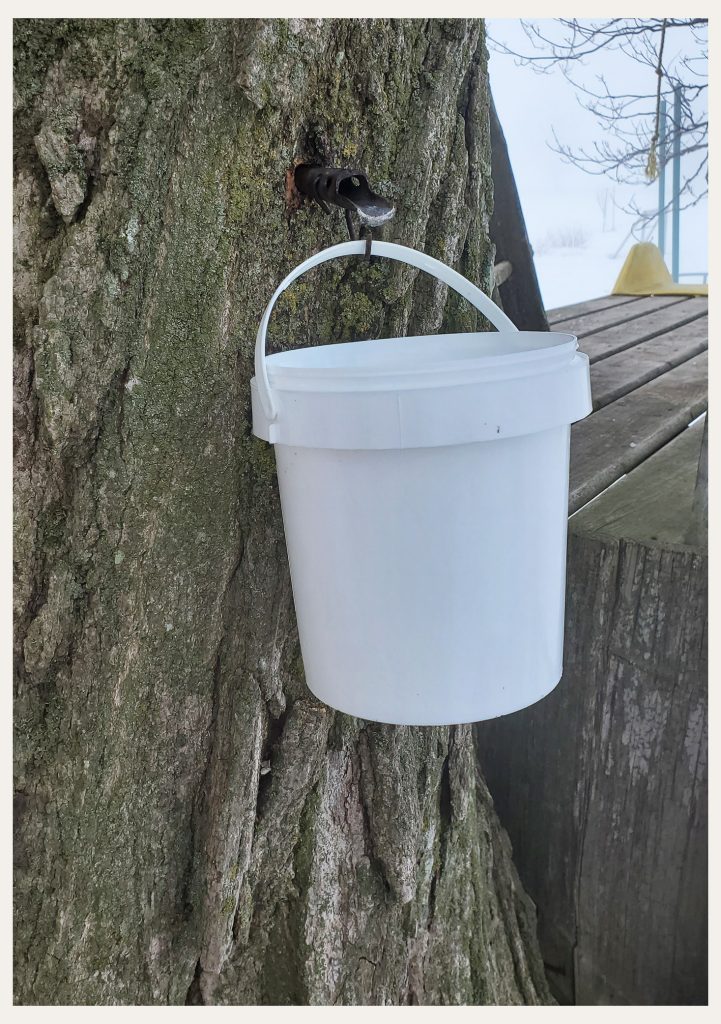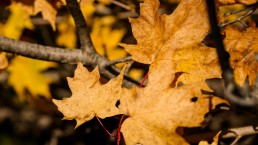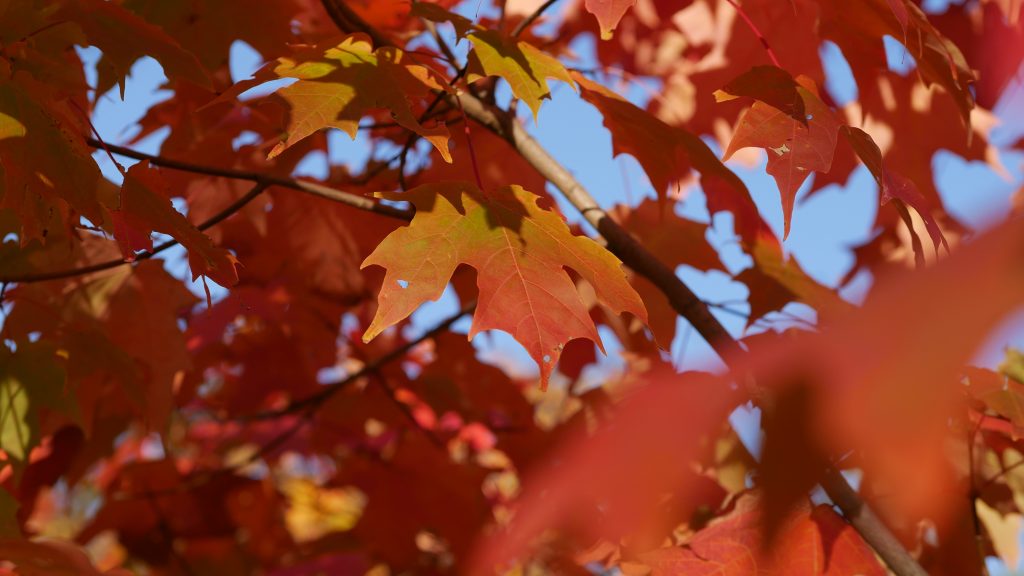Rising of The Sap
Tapping a Sugar Maple with Kids!
While towards the end of winter, it often seems like the cold days are never going to end, there is always this one special activity to look forward to…
One late winter day, one of my sons asked me to ‘tap’ our Maple tree – he wanted to taste the sap. Quickly he remembered that back in the bush, in the abandoned shack, there were dozens of old maple spouts. What can I say; while I use maple syrup in my kitchen weekly, never have I enjoyed the sap straight from the tree.
Finding the Right Tree
Many maple species can be tapped for their sap, but we were out to find the sweetest of the all; the sugar Maple. With our tree bud ID, we quickly set out to find one. It did not take long for the kids to forget about me, running around in the bush, finding several sugar maples on their own. Equipped with a drill, spout and small pail, we started the adventure of tapping our first tree.
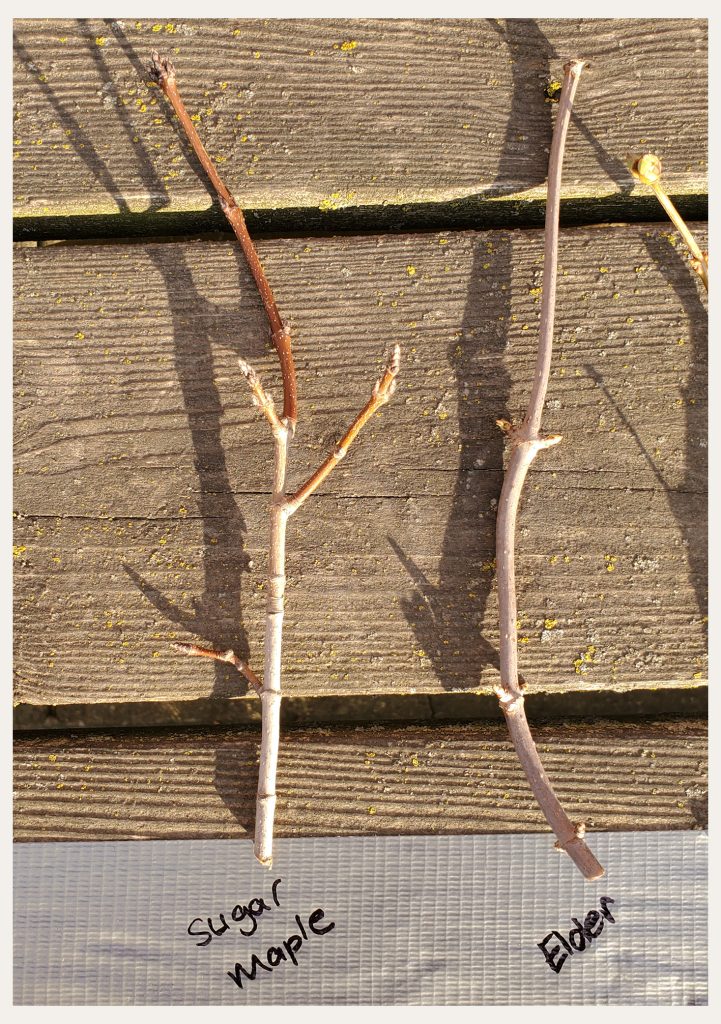
You should have seen the joy and amazement in their eyes, as the sap started dripping immediately. Little mouths, wide open right under the spout. Drip, drip, drip. Oh how sweet Maple’s water tasted!*
Close to lunch time we decided to hang the pail and collect the sap. By the time we returned, which was around 3 hours later, our little pail was overflowing! This got us even more curious. How about we collect 2 days worth of sap, and boil it down to make our very own maple syrup – just enough for one pancake breakfast…
Learning Together
One just has to love the innate curiosity kids bring with themselves. This easy and simple activity of identifying a sugar Maple, tapping it, tasting the sap and boiling it down to make syrup, just enough to enjoy it for one special breakfast, filled our weekend with joy, harmony and countless memories made. Not only have my children now experienced the taste of fresh Maple sap, but on a very small scale, they now know the basic process of how to make syrup in our own back yard, with next to no professional equipment, but only what we found in the kitchen. That weekend, we left the car in the garage and appreciated the gifts Mother Nature has offered us. We had each other, surrounded by crisp winter air, the warming rays of father sun and fresh, sweet Maple sap. An activity guided by the sun and the wheel of the year.
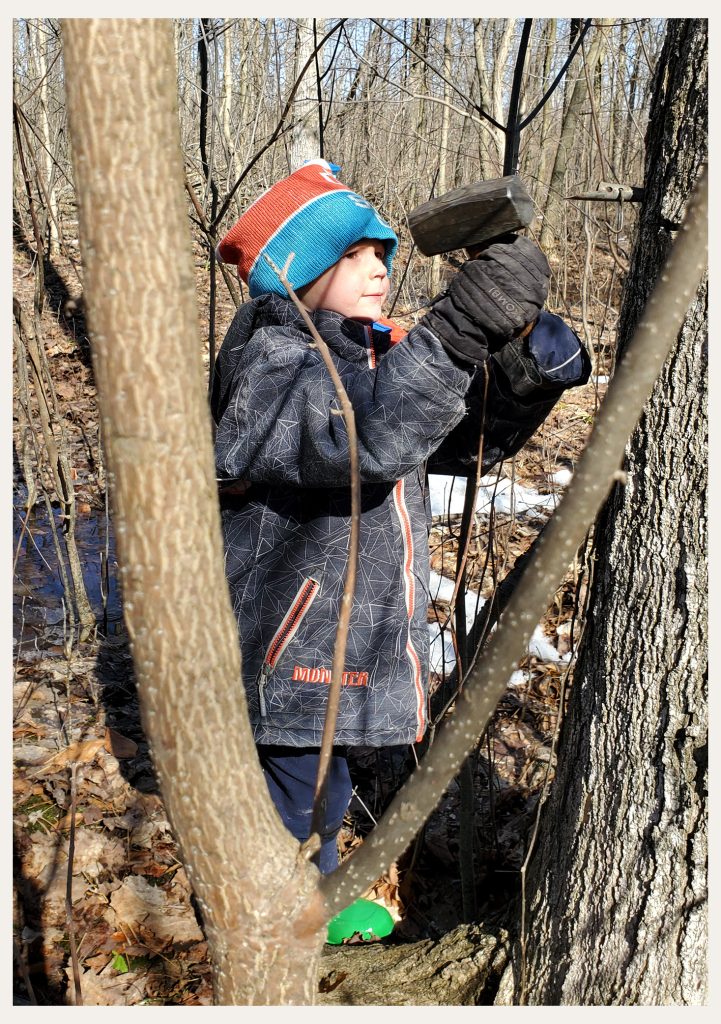
Following the wheel of the year is what brought us as a family closer to nature as well as closer to us, ourselves. While times can be busy and many of families are feeling a ‘disconnect’, it really does not take a lot to find your way back to the natural world and the myriad of gifts that are offered to us.
Reconnect to Mother Nature!
With all that being said, let us help you reconnect with Mother Nature!
At The Lion’s Tooth, we have designed a program to help busy families who feel disconnected from nature and their ancestry. Through 12 digital and in print magazines, with easy and accessible lessons and activities, families can re-connect with nature and learn to use plants like their ancestors did.
It’s time to find your way back to Mother Earth and live by the cycle of the sun. Connect to the wheel of the year and learn foundational knowledge about common wild plants and their many uses.
To learn more and to sign up, visit us at thelionstooth.ca
You can also connect with us on Instagram and Facebook @thelionstooth.ca
*while maple sap has several amazing health benefits, please be aware of the advised cautions when consuming it raw. Please research before drinking.
Featured header photo provided by Serena Mor, and blog photos provided by Evelyn
Talking About Maple Syrup
Spring is on it's way...
My first experience with making maple syrup by myself was for my son’s science fair project on evaporation. That was over 25 years ago! I had as much fun as the boys. First, we tapped a couple of old sugar maples. Then waited anxiously for the sap to flow. When it was time to begin our experiment, we evaporated just enough sap to make syrup and then continued the evaporation process till we make Maple Candy, such a yummy experiment!
Believe it or not, but I personally go through a 4L jug of syrup per year! We LOVE it!
When is maple syrup tapping and harvesting season?
Maple sugar season in Ontario normally starts in the late winter and ends in the early spring. The sugar maple’s sap starts to flow after a hard freeze. The best time for maple sap collection is when nights are freezing cold and are followed by sunny and rather warm days that are between 40 and 50 degrees Fahrenheit. On days when these conditions are not reached, the flow of sap will be slow. When optimum conditions are reached, the sap will flow quickly, on these days, we should check often so that the buckets don’t run over! The entire sap collection season only lasts from three to four weeks. When the temperature remains above freezing, or when the maple trees begin to form buds, it’s time to stop collecting sap from the trees. If maple syrup is made from sap collected once buds have begun to form on the maple trees, the syrup will smell bad and have a poor flavor.
How long does maple syrup last?
Maple syrup never spoils! This is due to the high concentration of sugar in maple syrup. Maple syrup should be kept in the refrigerator once it’s opened to discourage mold from growing on the syrup. Should mold grow on maple syrup, it’s safe and easy to remove. Just scoop the mold off the top of the syrup with a spoon and discard the mold or strain the maple syrup into a clean container through a piece of cheesecloth. Maple syrup kept in a cold place such as a refrigerator is less likely to grow mold than maple syrup kept in a cupboard or other warm place.
How do you know when the maple syrup is done?
We have chosen to use a very simple method, the spoon test. Dip a spoon into the boiling sap and watch the sap drip back into the pan. If the sap still needs to boil more, the sap will fall off the spoon in separate droplets. When the syrup starts to run off the spoon in a sheet or a stream, then it’s almost done. It will also start to look more like syrup and less like sap at this point. If you think the syrup is done, take it off the fire and let it cool a bit. As it cools it should start to thicken if it has turned into syrup. If the syrup is still not thick enough it can be returned to the heat and boiled some more.
Which maple tree do you get syrup from?
There are three different species of maple that produce the kind of sap from which maple syrup is usually made, Sugar Maple (Acer saccharum), the Black Maple (Acer nigrum), and the Red Maple (Acer rubrum). These three species of maple have very high sugar contents in their sap. Red Maples offer a shorter sugar season because they tend to bud earlier than either Sugar or Black Maples. You can also tap the Manitoba Maple (Acer negrundo), the Silver Maple (Acer sacharinum), and the Bigleaf Maple (Acer macrophyllum). Birch and Black Walnut trees can be tapped for syrup. Next year I am going to try Black Walnut just for fun!
Does maple syrup have potassium in it?
One tablespoon of maple syrup contains 42 mg of potassium. Not only does maple syrup contain potassium, but it also contains calcium, zinc, manganese, magnesium, and iron. The darker the maple syrup, the more of these minerals it contains. Maple syrup also contains trace amounts of vitamins B1, B2, B5, B6, biotin and folic acid.

